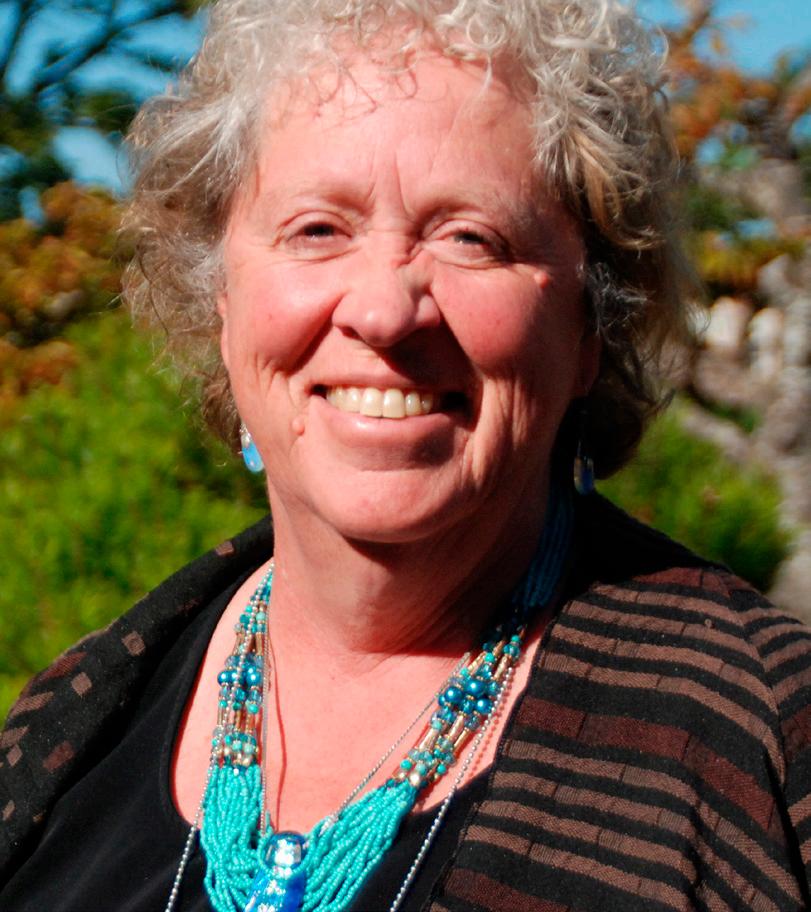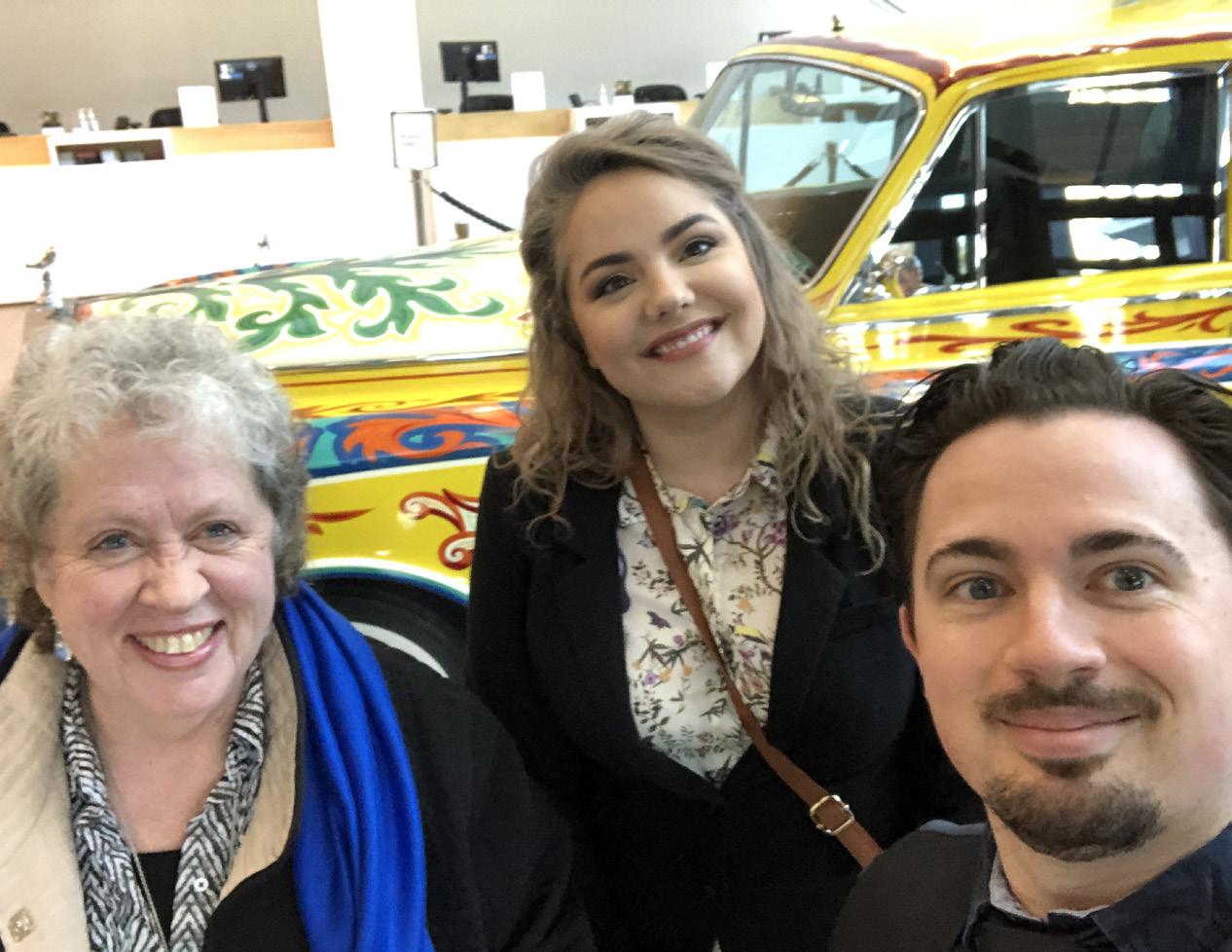
6 minute read
Lunch With Owl: Kit Grauer
Interviewed by Lindsay Foreman, Managing Editor: Roundup Magazine
Advertisement
KIT GRAUER
Ph.D., Professor Emerita, Art and Museum Education, The University of British Columbia
L: Can you share your educational and work background with us? What drew you to art education?
K: When I was completing my undergraduate coursework at UBC, I took a textiles course in the education faculty with Penny Goldstone. I was young and I remember coming home and knowing “that is what I want to do when I grow up.” I became an art teacher and taught in Richmond for 10 years. During that time, I completed my Master’s degree and became a Supervisor of Art, which allowed me to teach students from Kindergarten to Grade 12. I also started my Ph.D. at Stanford with Elliot Eisner.
I worked as a faculty advisor for a year at SFU before I took over Penny’s job at UBC, teaching textiles, etc. I hadn’t finished my Ph.D., so I continued to work on it while teaching full time and raising my family. It wasn’t until I started working with graduate students that I realized that museum education was going to be my continued passion. We started a specific museum education program at UBC. I also ran summer art programs at the Vancouver Art Gallery and the Museum of Anthropology at UBC for 10 years.
L: Can you share about the dream and reality of The Galiano Relief Retreat?
K: We are in the privileged position of having a place on the Gulf Islands and a studio right on the water. My husband, Peter Scurr, taught art and graphics for the Delta School District and we always invited the secondary school art teachers over for a year-end retreat. We would create a collaborative project, and over time, as many of us had children, it became kid-focused.

Printmaking at the Galiano Relief Retreat, July 2019.
Dr. Kit Grauer
We were fortunate to be given a printmaking press that belonged to one of our former teachers at UBC. Once we got the press, we shifted our projects to use it. Now we have support and classes visiting from across the Lower Mainland, including: Richmond, Delta, Surrey, Langley, and a couple of private schools.
Many of the students come from inner city schools; they have never been on a ferry or in the forest. It is a wonderland for them to visit us at the studio. Each year we select a theme for our workshops. This year’s theme is “Birds of a Feather.”
L: Volunteerism has always been a main component of your career. Can you speak about your time working with the BCMA and the Gulf of Georgia Cannery?
K: When I went to school, volunteering was just an expected part of what you did as an educator. You helped organize associations and bring people together from around the world. Art education has always been about looking at the bigger picture and making connections globally. I have been on the executive of local (i.e., BC Art Teachers’ Association - BCATA), national (i.e., Canadian Society for Education through Art - CSEA) and international (i.e., International Society for Education through Art - InSEA) organizations. Last year, I co-chaired a conference for InSEA that brought over 700 hundred art educators from around the world to UBC.
Becoming a member of the BCMA board in retirement has been an incredible delight. The six years I spent on the board gave me a chance to be involved with the museum sector in a special way. The boards I worked with were peopled with wonderful, dedicated museum professionals. So many of my former students are also members of the BCMA.
It has also been a pleasure working on a board at a small museum. I have worked with the Gulf of Georgia Cannery Society for eight years now in the capacity of Director, Vice Chair, and now Chair of the board. I was originally invited on to the board because they needed someone with a museum education background. I felt that I could make a real difference because of that. I have always stressed that we need to connect to the community, the larger public, and to tell the stories that need to be told. Currently, we have prioritized reconciling and sharing the stories of all of the marginalized groups who worked in the west coast fishing industry.

Dr. Kit Grauer, Executive Director of the Gulf of Georgia Cannery Stephanie Halapija and BCMA Executive Director Ryan Hunt in front of John Lennon’s Rolls Royce at the Royal BC Museum and Archives.
Dr. Kit Grauer
L: How do you express your own creativity? Do you have a preferred medium?
K: I did a photography course when I was at Stanford, which was really wonderful. I tend to work with and manipulate digital images. I’ve started painting again, which has been quite fun. Painting over photographs. Using textile techniques to put photographs together. Playing with all the media.
Peter and I curate. We collect random bizarre stuff and curate it into something that amuses us for a time. Then we take it apart and do it all over again. We make our own galleries at home and at Galiano.
L: Today people are using the term “curate” more colloquially. How do you feel about this?
K: I think it is a great word. It really does say “I’ve got this stuff and I want to put it together in a thoughtful way that juxtaposes these things together.” I don’t mind it being used. I think any way that allows people to understand what is going on in art museums is better for us.

Printmakers from Montreal, Toronto, West Virginia, Montana, Merritt, Tsawwassen and Ladner, holding up the international print following the InSEA World Congress at UBC, July 2019.
Dr. Kit Grauer
L: What have been some of the most influential changes you’ve witnessed in museums and galleries over the course of your career?
K: The biggest change I’ve observed, is a shift in perspective and attitude from: “these are my things and you can look at them and I have the right way of looking at them” to “oh how do you respond to these things and what is the meaning in it for you?” The shift has been from “don’t touch the stuff” to “let’s have a dialogue about these items, how do they connect to you?” “What do these objects say about people’s lives?”
More recently, there has been a major shift in the sector in response to the Truth and Reconciliation Commission of Canada’s Calls to Action. We’ve never before seen the collaborations and changes in perspectives that we are observing today.
L: Do you have any advice for emerging professionals in the museum/gallery sector? What has helped you maintain your balance, passion, and focus throughout your career?
K: I have always placed an emphasis on relationships and community in both the professional and personal aspects of my life. I try to find like-minded people that have a deep commitment to the arts and education. It is why I loved having graduate students or working in a collective at the university. Working as part of a collective can be liberating because academia emphasizes “self” above all. It should actually be the opposite, as working as part of a collective improves your chances of survival. Keep in touch with other professionals and get involved outside your work place.










